
Timing is everything. Whether you’re trying to capture the perfect shot of a motorcycle screaming by at 113 miles an hour at Laguna Seca, or just trying to figure out when to dodge the lunch crowd at your favorite restaurant, the little arms that swirl away on your watch face have a lot more to do with getting it right than your choice of camera, or even which restaurant you end up at.
And so it goes with buying electronics. Scouring the Web for bargains can get you the best immediate satisfaction, but knowing when to wait – or act quickly – can yield even bigger savings than you might imagine. You just need to know how the ins and outs of a complex and sometimes befuddling industry. Mark your calendars: Here’s when to scoop up the gadgets you’ve been lusting after for the absolute minimum price.
HDTVs
Had ancient Egyptian astronomers been unable to produce a 365-day calendar by tracking the course of the stars, they probably could have figured it out by watching the TV industry, which pumps out sets so regularly it rivals the train system in Europe for reliability. Every winter and spring herald the announcement of new TVs, which begin to hit stores about six months later. According to Brent Butterworth, a contributor to Sound & Vision magazine, that makes the season prime time to jump in and save.
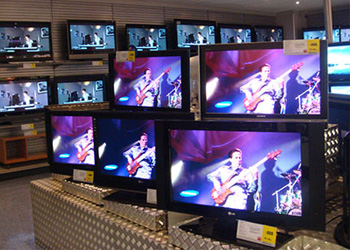
But not everyone is content swaggering out of the store with a deeply discounted ’09 model when the glitzy new ’10 models sing their siren song from store shelves. Even for these antsy early adopters though, a little patience goes a long way. “If you want the newest stuff, you’re better off waiting until Christmas time, or even after Christmas when they have end-of-year sales,” Butterworth says. “There is competition, and all the stores are trying to pump their numbers up for the year.” Which means shaving prices thinner and thinner to get every leg up on rival stores. “If you buy a TV sometime in December, you’re going to get a really good price on a recent model set.”
Home Audio Equipment
Because mainstream home audio equipment tends to come out of many of the same companies that produce televisions, like Sony, Samsung and LG, the rules for scoring an affordable pair of speakers or an amp look a lot like the rules for scoring a nice TV. They’re commodities. “The more mass-market you get, the more it tends to follow the TV-type timeline,” Butterworth says. “They’ll show the stuff in the spring, then bring it out in late summer, and you start getting really good prices at Christmas time.”
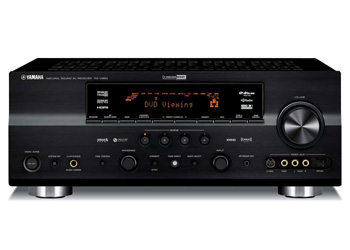
Bad news for audiophiles: There is no best time to grab those KEF Muon speakers and McIntosh tube amp. Unlike the Swiss-watch TV industry, boutique speaker builders eschew timelines in favor of simply releasing products when they’re done. And even if you wait, there’s no guaranteed discount at the end of the rainbow. “So much audiophile gear is sold at list price, as opposed to TVs, which are almost never sold at list price,” says Butterworth. The real best time to buy a $140,000 pair of speakers: After you sell your yacht and have some spare change.
Video Games & Systems
Like most products, waiting pays out dividends when it comes to video games, but you won’t have to watch four seasons pass before the object of your desire falls within buying range, as with TVs. In fact, the intense competition for shelf space at game stores drives prices down before you’ll even need another haircut. “You want to wait about six to eight weeks for the inevitable price drop,” says Digital Trends’ video game expert, Scott Steinberg. “You might be able to grab it for as much as 20 to 30 percent off. Pricing plummets.”
Still can’t wait two months for Best Buy to mark it down so you can get in the game and frag with friends? Try to score a used copy. Steinberg says they usually start cropping up just a couple weeks after launch. “It gives time for people to finish the game and trade it back in, so you can pick up a preowned copy.” And you’ll typically save $10 to $20.
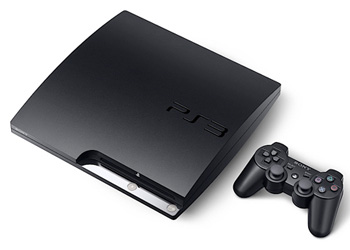
And if you – or the kids – aren’t quite as patient, online game distrubution systems like Steam and WiiWare typically offer fairly consistent year-round deals.
Cell Phones
With all major U.S. carriers announcing new phones around the clock and a dozen manufacturers all working overtime to produce the next killer device, keeping track of all the different models in circulation at any given time can seem like a Herculian task. But this frantic pace works to your advantage: Any time is a good time to buy a cell phone, as long as you keep your eyes open.
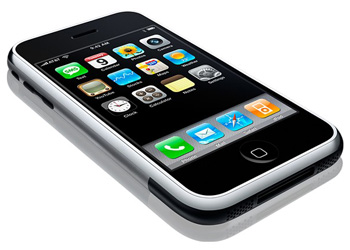
Of course, to take advantage of the most attractive phone deals, you’ll need to agree to a two-year service contract with a carrier like AT&T or Verizon. For potential buyers locked into existing contracts, this could mean riding it out with an older phone for a few more months in order to grab the massive rebates available upon renewal. Always call your provider to see if you might be eligible for an upgrade prior to an existing contract expiring. AT&T, for instance, allows customers with monthly bills over $99 to upgrade after just one year – as long as they’re willing to lock into another two years of service.
GPS Navigation Systems
No matter when you buy a GPS, the worst time to buy has already passed. “Personal navigation device prices have fallen through the floor,” says PC Magazine’s Lendino. “Three years ago, $500 to $1000 was common for high-end GPS devices. Today you’d be hard pressed to find one for above $300.”

Desktop or Laptop Computer
Think of your next computer purchase a bit like your next car purchase. “You buy them at the end of the year, because you have brand new models rolling out,” says Consumer Reports senior Web electronics editor Paul Eng. A wave of new computers sparked by a new processor announcement, or in this case, a new operating system like Windows 7, can trigger a landslide of prices on “old” models that just aren’t that old.
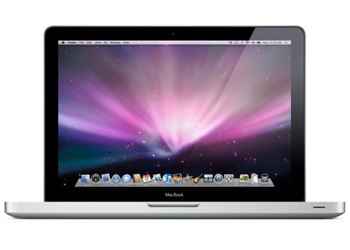
Eng also recommends the very beginning of the year, when everything that didn’t sell well at Christmas is on sale, and retailers are trying to dump it before the next big wave of new PCs: June. The kids may cringe to hear it in the same month that school bells ring and liberate them for the summer, but these are the “back-to-school” computers. Most major computer makers announce their next breed in January at shows like CES and MacWorld, then release them in June in time for parents to pick one out for Junior before sending him back to his studies in the fall. And if he doesn’t need a new one, his parents are in luck, because they’ll save a wad on last year’s model.
MP3 Player
“The MP3 player market is a funny animal,” says Consumer Reports senior Web electronics editor Paul Eng. “It’s ‘iPod,’ and then everything else.” In other words, Apple sets the agenda. And as anyone who follows the company knows, Mr. Jobs only drops the price on one product when he wants the Apple legions to buy another.
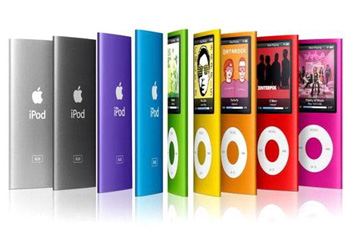
Apple tends to time its iPod releases – including the recently released Nano and Touch – to early September. And other major manufacturers play right along. Microsoft, for instance, timed the release of the new ZuneHD to early September in order to correspond to Apple’s own announcements, and SanDisk released its own Shuffle competitor, the Clip+, in late August.
Digital Cameras
Much like the cell phone industry, the digital camera market moves at breakneck pace, but has the smoothly regulared release schedule of the TV industry. “When models are announced at CES and PMA in January, they’re usually available in the spring,” says Will Chambers, editor in chief of Steve’s Digicams.” Then later on in the summer, the next round of models are announced, and available in the fall.”
The result: a never ending turnover of high-quality cameras that aren’t even a year old, heavily discounted. “The shelf life of an average consumer digital camera these days is about six months,” says Chambers. “It’s great for consumers, because you’re going to have a new camera announced, and the camera it replaces was only announced six to nine months ago. It’s still an excellent digital camera.”

What can you expect to lose by buying behind the curve? Not much. “The older models are still offering some of the latest technologies, like image stabilization, face detection, autoexposure,” says Chambers. Perhaps the only cutting edge feature some consumers may mourn the loss of: HD video.



